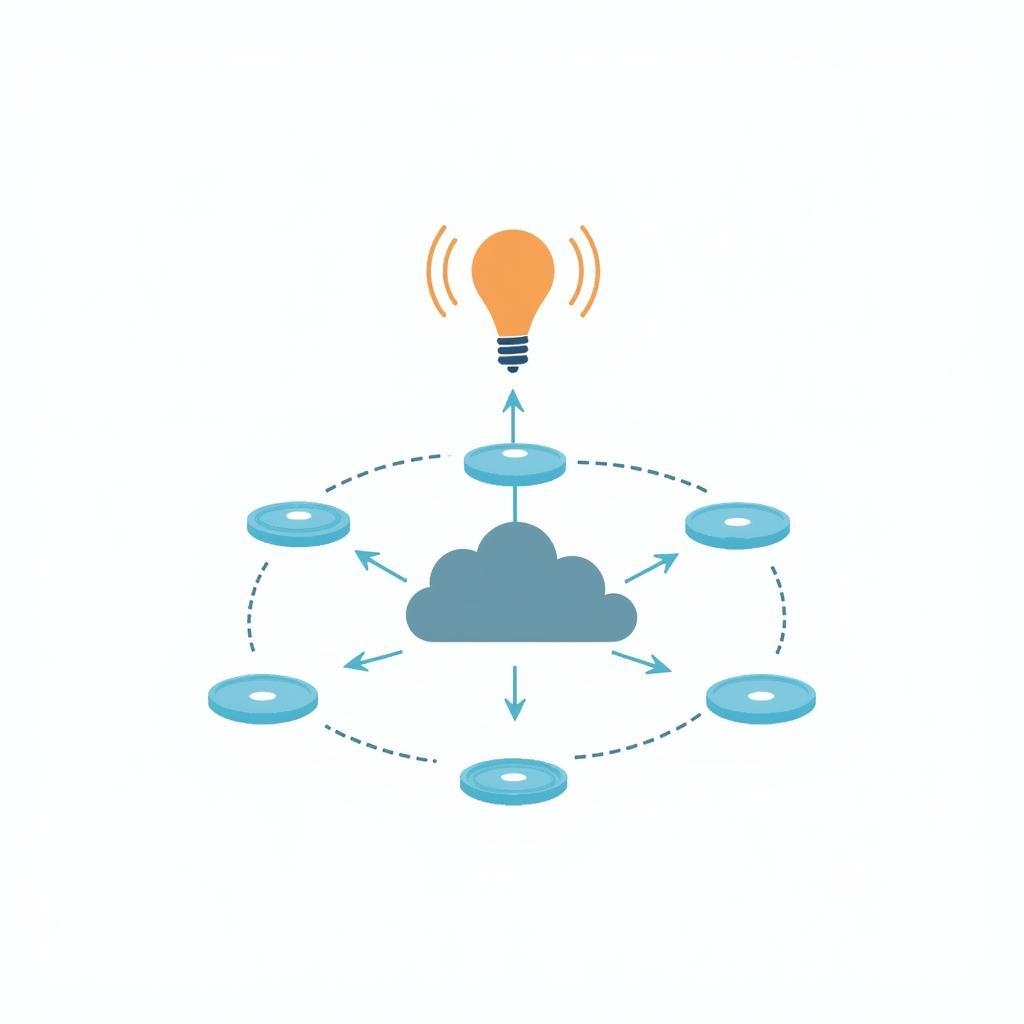Aggregation services, routers, SIP, and SPA are all interconnected technologies that play crucial roles in modern communication networks, particularly in the realm of VoIP (Voice over Internet Protocol). Understanding how these components work together is essential for building a robust and efficient communication system.
Understanding Aggregation Services
Aggregation services combine multiple network connections into a single link, increasing bandwidth and improving network resilience. This is particularly beneficial for businesses with high communication demands. By aggregating multiple internet connections, companies can ensure uninterrupted service even if one connection fails. Imagine having a backup internet connection automatically kick in when your primary connection goes down – that’s the power of aggregation services. These services enhance the reliability and performance of VoIP systems by providing a more stable and higher-capacity connection for voice and video traffic.
 Aggregation Services Diagram
Aggregation Services Diagram
The Role of Routers in VoIP Communication
Routers are the traffic directors of the network. They determine the best path for data packets to travel, ensuring efficient communication between devices. In VoIP systems, routers play a critical role in prioritizing voice traffic over other data types, minimizing latency and jitter, which are essential for clear and uninterrupted calls. Modern routers often incorporate Quality of Service (QoS) features, which allow administrators to prioritize specific types of traffic, ensuring that VoIP calls receive the necessary bandwidth and priority.
 Router VoIP Configuration
Router VoIP Configuration
SIP: The Protocol Powering VoIP
SIP (Session Initiation Protocol) is the signaling protocol responsible for establishing, managing, and terminating VoIP calls. Think of it as the language that VoIP devices use to communicate with each other. SIP handles tasks such as call setup, call routing, and call tear-down, ensuring seamless communication between endpoints. Its flexibility and open standard nature make it a popular choice for VoIP implementations. Without SIP, VoIP phones wouldn’t know how to connect, ring, or even hang up.
SPA: Session Border Controllers for Enhanced Security
SPA (Session Border Controller) is a security device specifically designed to protect VoIP networks from external threats. It acts as a firewall between the internal network and the public internet, preventing unauthorized access and malicious attacks. SPAs also provide NAT (Network Address Translation) traversal, allowing VoIP devices behind different firewalls to communicate seamlessly. They ensure the security and privacy of VoIP communications, protecting against threats such as denial-of-service attacks and eavesdropping.
How These Technologies Work Together
Aggregation services provide the bandwidth, routers manage the traffic, SIP establishes and controls calls, and SPAs ensure security – together, they form a complete VoIP ecosystem. Imagine a symphony orchestra, with each instrument playing its part to create a harmonious melody. Similarly, these technologies work in concert to deliver high-quality, secure, and reliable VoIP communication.
Conclusion
Aggregation services, routers, SIP, and SPA are essential components of modern VoIP systems. Understanding their roles and how they interact is crucial for building a robust and secure communication infrastructure. By leveraging these technologies effectively, businesses can enhance communication efficiency, improve productivity, and ensure the security and reliability of their VoIP services. Choosing the right combination of these technologies is essential for optimizing VoIP performance and achieving your communication goals.
FAQs
- What are the benefits of using aggregation services for VoIP?
- How do I configure my router to prioritize VoIP traffic?
- What is the difference between SIP and VoIP?
- Why is an SPA necessary for VoIP security?
- How can I choose the right aggregation service, router, and SPA for my business?
- What are the common troubleshooting steps for VoIP issues related to these technologies?
- How can I monitor the performance of my VoIP system and ensure its optimal operation?
Scenarios
-
Scenario: A company experiences frequent dropped calls and poor voice quality due to insufficient bandwidth.
Solution: Implementing aggregation services can combine multiple internet connections to provide the necessary bandwidth for smooth VoIP calls. -
Scenario: A business needs to prioritize VoIP traffic over other data types to ensure clear and uninterrupted communication.
Solution: Configuring QoS settings on the router allows administrators to prioritize VoIP packets and allocate sufficient bandwidth. -
Scenario: A company is concerned about the security of its VoIP network and wants to protect against unauthorized access and attacks.
Solution: Deploying an SPA creates a secure barrier between the internal network and the internet, preventing intrusions and protecting VoIP traffic.
Further Exploration
- Read more about VoIP security best practices.
- Learn about advanced router configuration for VoIP optimization.
- Explore the latest trends in aggregation services for businesses.
Need assistance? Contact us at Phone Number: 0373298888, Email: [email protected] or visit us at 86 Cau Giay, Hanoi. We have a 24/7 customer support team.